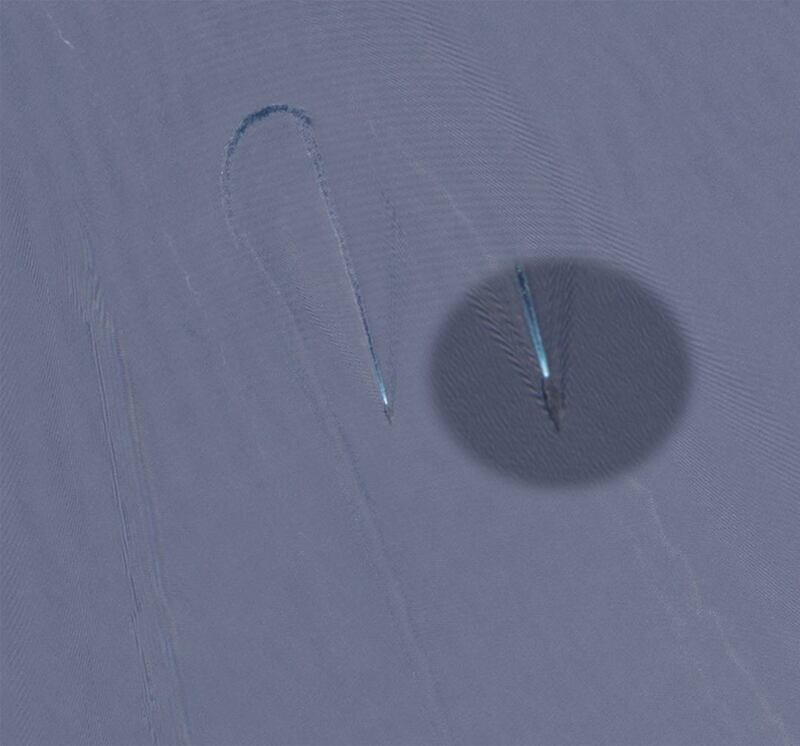The U.S. Navy’s aircraft carrier USS Nimitz and its carrier strike group arrived in Thailand Monday on a week-long visit after crossing the South China Sea and making a bizarre U-turn in Vietnam’s exclusive economic zone (EEZ).
Data provided by the ship tracking website MarineTraffic show that the Nimitz turned on its automatic identification system (AIS) signal at around 21:30 p.m. UTC on Sunday when in Thailand’s territorial waters. Three hours later it arrived and docked at Laem Chabang Port.
The last time the carrier’s AIS was turned on was in Busan, South Korea, on April 2.
The Nimitz Carrier Strike Group conducted a trilateral maritime exercise with the Japan Maritime Self-Defense Force and Republic of Korea Navy on April 3-4, according to the U.S. Navy.
Meanwhile, open-source intelligence (OSINT) analysts said that on Saturday, while sailing through Vietnam's EEZ in the South China Sea, the Nimitz made a dramatic U-turn before heading west towards the Gulf of Thailand.
The purpose remains unclear but analysts citing satellite data said the maneuver area was near some of Vietnam's oil and gas blocks and the Vanguard Bank, a known flashpoint between Vietnam and China.
RFA is not able to independently verify this information.

The U.S. Embassy in Bangkok said in a statement that the USS Nimitz's visit to Thailand from April 24-29 provides "an opportunity to strengthen the U.S.-Thai security partnership and advance people-to-people ties."
While in Thailand, the carrier will host a reception to “celebrate the 190th anniversary of U.S.-Thai diplomatic relations,” the statement said.
The carrier group to visit Thailand consists of the USS Nimitz, Ticonderoga-class guided-missile cruiser USS Bunker Hill and the Arleigh Burke-class guided-missile destroyers USS Decatur and USS Wayne E. Meyer.
Its commander is Rear Adm. Christopher Sweeney.
Decommissioned in 2026
The Nimitz Carrier Strike group departed Bremerton, Washington, for a routine deployment in November 2022 and is currently in the U.S. 7th Fleet area of operations.
Earlier this month, after taking part in the trilateral exercise with Japanese and South Korean navies in the East China Sea, the USS Nimitz was spotted sailing in the waters east of Taiwan at the same time the Chinese carrier Shandong conducted exercises in the area.
Beijing deployed the Shandong and a number of other warships in an apparent response to the meeting between Taiwan’s President Tsai Ing-wen and U.S. House Speaker Kevin McCarthy in California on April 5.
Taiwan's Minister of Defense Chiu Kuo-cheng was quoted in local media as saying that while he couldn't confirm that the Nimitz was there for the Shandong, given the situation "there's a connection."

The USS Nimitz (CVN-68) will leave service in 2026, the U.S. Naval Institute said last week, according to a Navy's decommissioning plan.
The nuclear-powered aircraft carrier was commissioned in 1975 and built for a 50-year service life.
The Nimitz is one of the largest warships in the world, with a displacement of more than 100,000 tons. It can carry up to 90 fixed-wing aircraft and helicopters, and has a crew of about 6,000 personnel.
Another nuclear-powered aircraft carrier, the USS Dwight D. Eisenhower, is also set to retire in 2027.
In the latest development, Chinese newspaper China Daily reported that the Liaoning aircraft carrier "has recently carried out multiple exercises in the Western Pacific."
That means that for the second time, the two Chinese carriers -- Liaoning and Shandong -- were operating together in the Pacific. The first time was in August 2022 after the then U.S. House Speaker Nancy Pelosi visited Taipei.
Meanwhile, Chinese newspaper Global Times quoted a report on state television CCTV which said on Saturday that China’s third aircraft carrier Fujian “has successfully carried out propulsion and mooring tests prior to its upcoming maiden voyage,” probably within this year.
Edited by Mike Firn.
